Newsletter
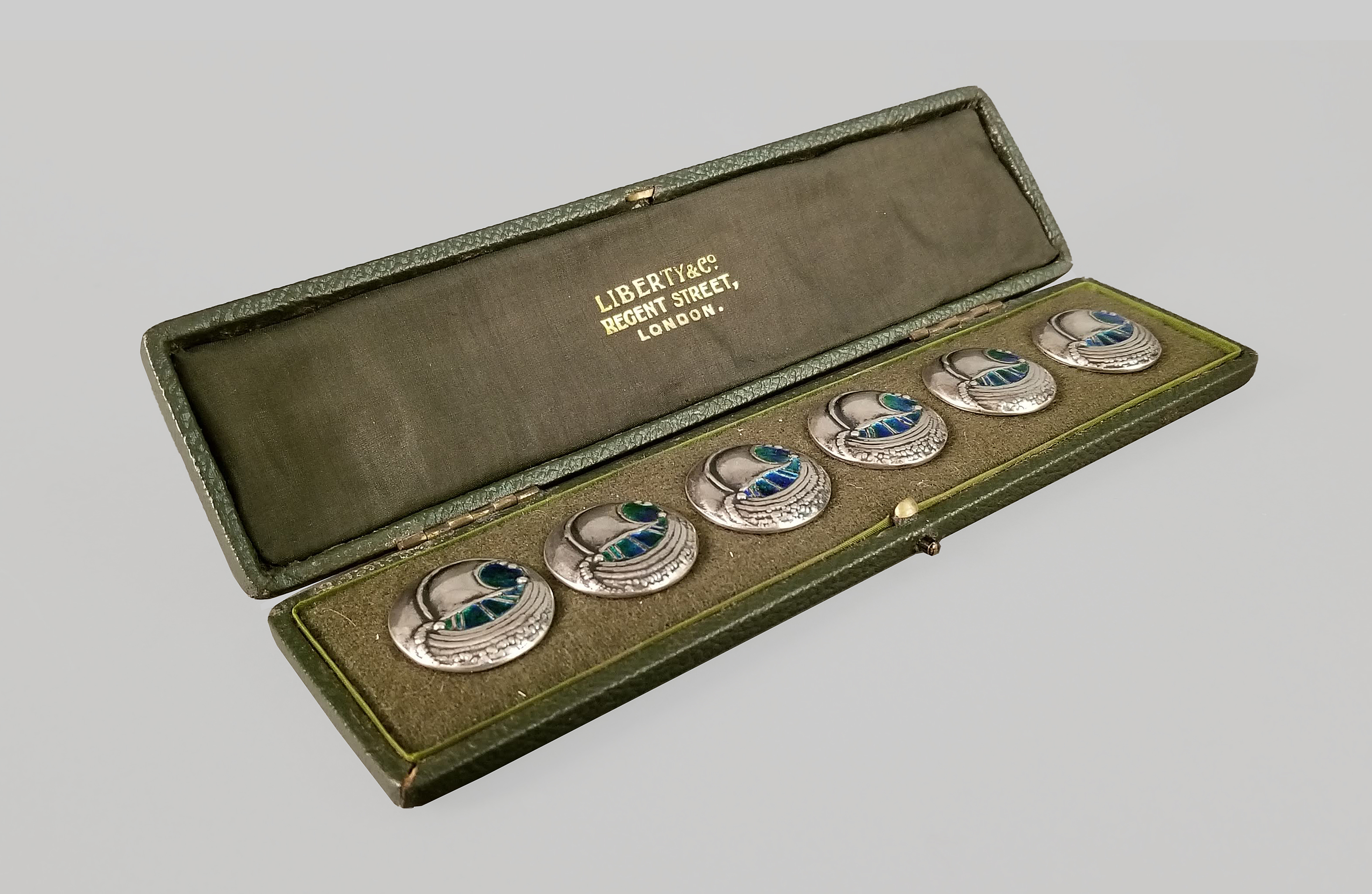
Fig. 1 - Attributed to A.H. Jones, Buttons with galleons and box, 1907, sterling silver and enamel, TRRF Collection.
Ranging from a quarter-inch to an inch-and-a-half, buttons were fashion necessities during the 1890s to 1910s. The Two Red Roses Foundation (TRRF) recently acquired six silver button sets, each decorated with cast, chased, or enameled Arts and Crafts motifs. Retailed in England, these fastenings provide insight into an aspect of personal adornment in the Arts and Crafts era often overlooked by fashion and jewelry historians.
Dating back to 3,000 B.C., buttons were originally made from shell, wood, and other found materials. They were mostly ornamental accents and served little function until the thirteenth century, when the button hole became prevalent in fashion. While they might seem insignificant, button holes enabled reliable and secure fastening, making formfitting clothing possible. Produced in precious metals and stones, buttons were now more akin to jewelry. These sumptuous commodities served as visual symbols of wealth, reserved for the elite.
The Industrial Revolution of the 1850s marked another shift in button production and consumption. Automated button manufacturing made the latest fashionable shapes accessible at lower prices. With numerous options available – fabric, enamel, porcelain, glass, silver, gold – a button’s size dictated its use. Larger designs adorned coat fronts, while smaller sizes served as sleeve, dress, and waistcoat closures. All the buttons in the jewelry collection of the Two Red Roses Foundation were made by European silversmiths between 1901 and 1907. Each set contains six matching buttons decorated with popular Arts and Crafts motifs. They are stored in original fitted boxes, some with lid satins advertising their retailers.
One set, made by Birmingham silversmith Lawrence Emanuel, features conventionalized (simplified) roses executed in wirework on a green enamel background (Fig. 2). The rose motif was probably inspired by the work of contemporary Glasgow architect and designer Charles Rennie Mackintosh.
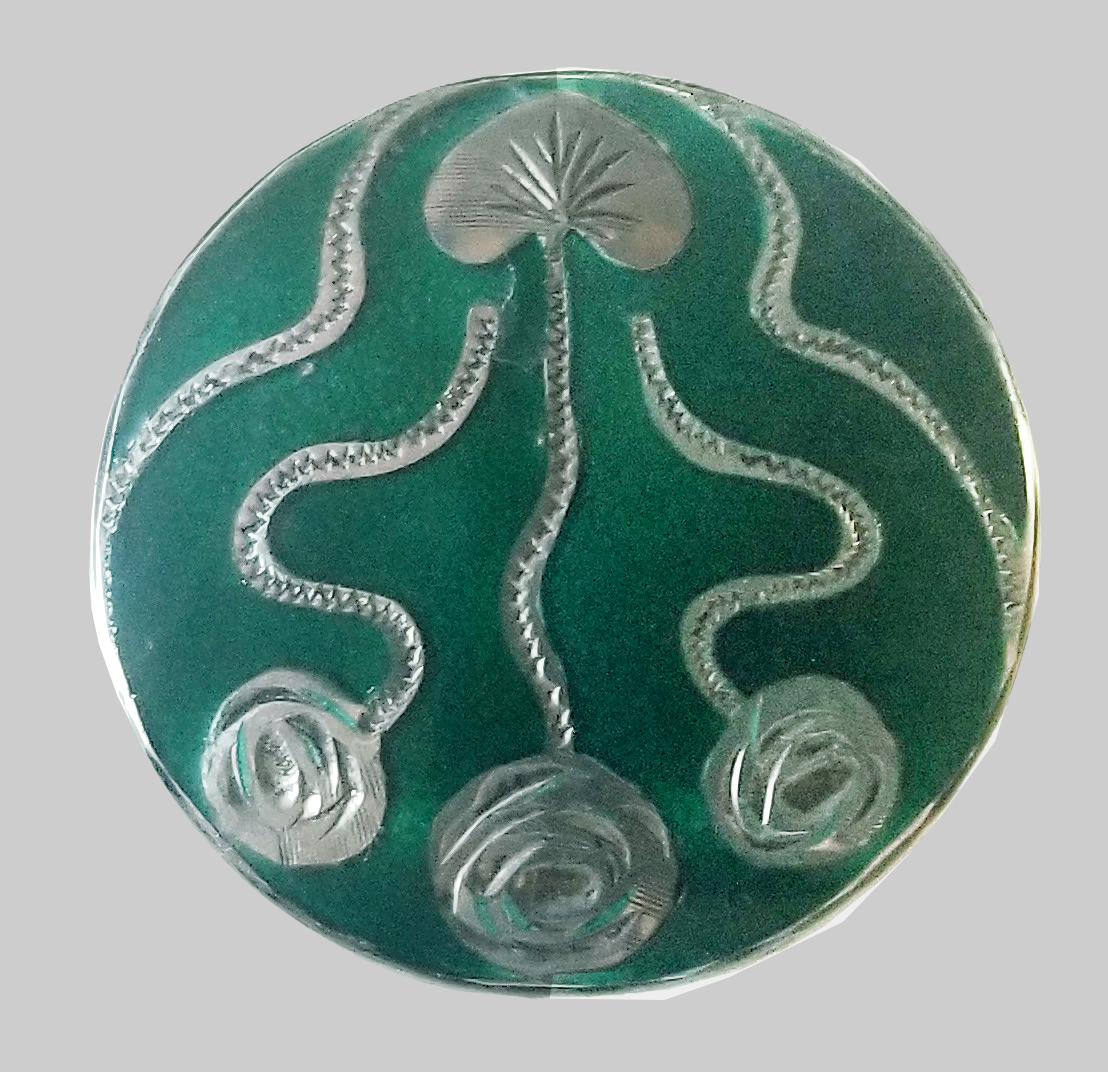
|
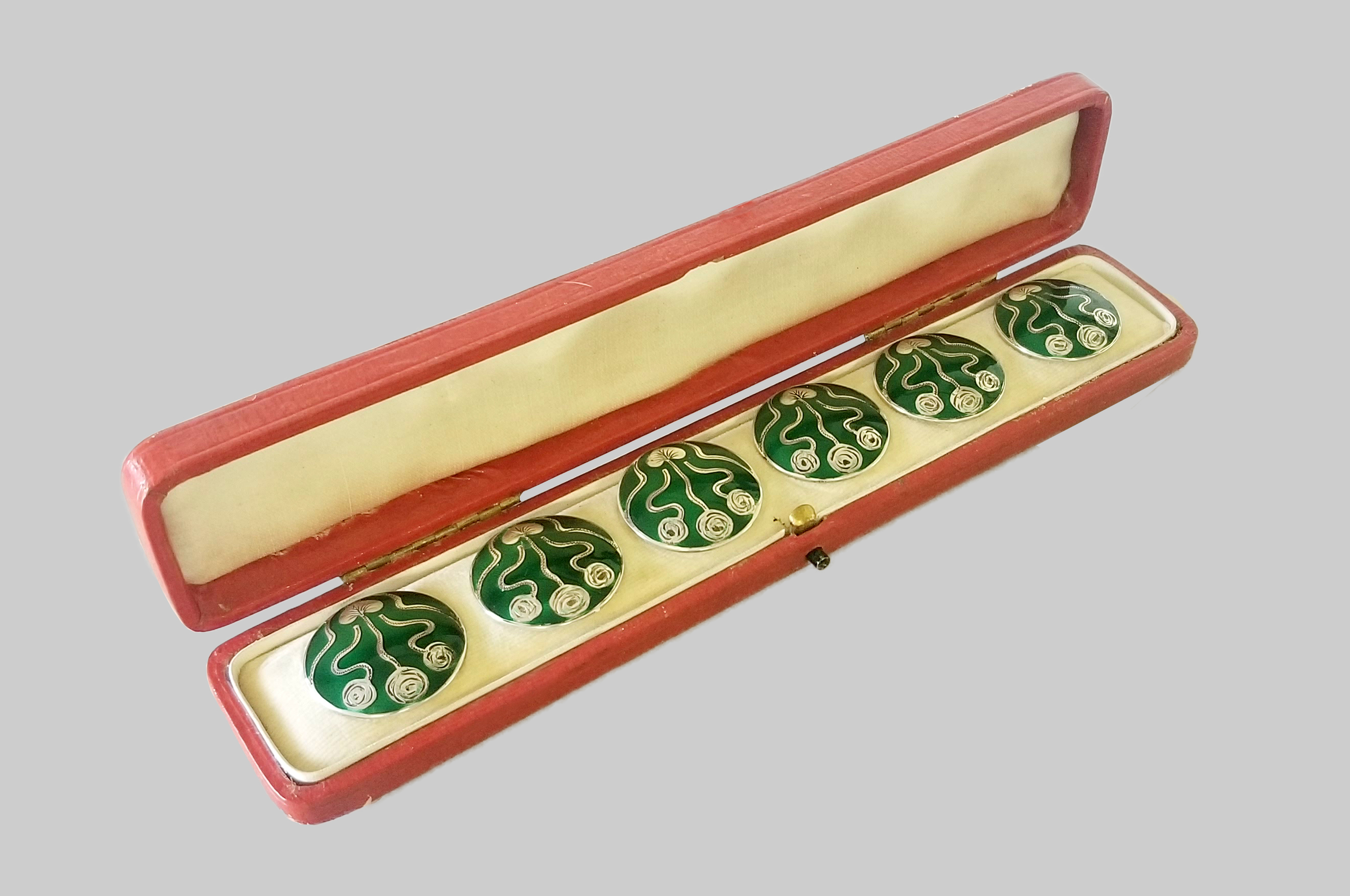
|
|
Fig. 2 - Laurence Emanuel, Buttons with rose designs, 1907, sterling silver and enamel, TRRF Collection. |
|
Another set, made in the Netherlands for export to England, depicts a Dutch countryside and windmill (Fig. 3). Imagery romanticizing Holland’s windmills frequently appeared on Arts and Crafts designs.
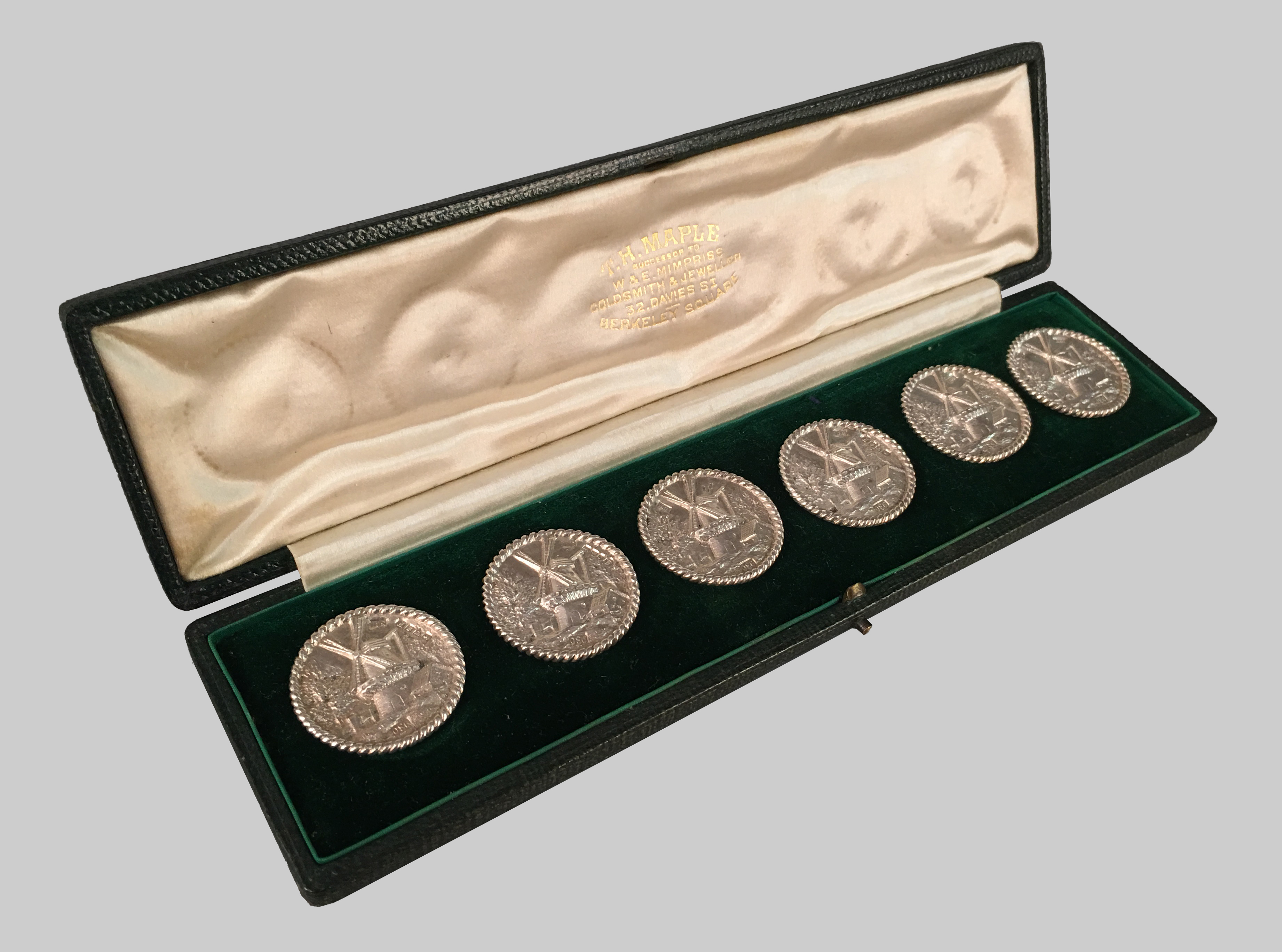
|
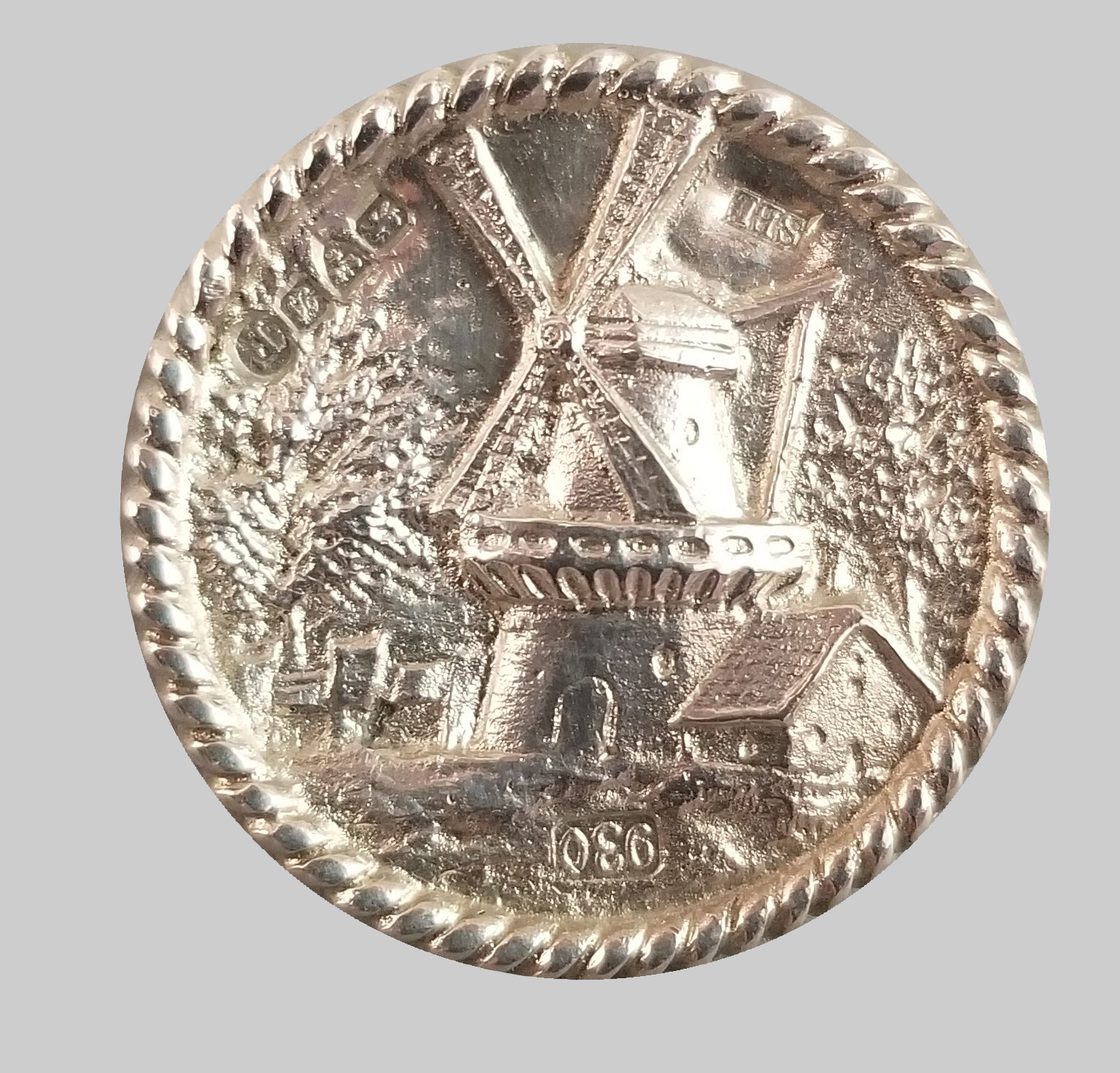
|
|
Fig. 3 - Unknown Dutch maker, imported by Samuel Boyce Landeck, Buttons with windmills, 1902, sterling silver, TRRF Collection. |
|
Two other sets by English silversmiths feature wildflower designs. One set is decorated with enameled Forget-me-nots (Fig. 4). Designed and manufactured by the Birmingham firm of Harry Synyer and Charles Joseph Beddoes, the set was retailed by the popular Canterbury gift shop of William Pollard. A second set by the firm James Deakin & Sons, Ltd. features entwined carnations (Fig. 5). Floriography, the language of flowers, was extremely popular during the late nineteenth and early twentieth centuries. Flowers were used to convey coded messages which could not be spoken out loud. Forget-me-nots represented faithful love and memories, while carnations embodied beauty. The buttons’ coded messages would have been understood by wearers and admirers.
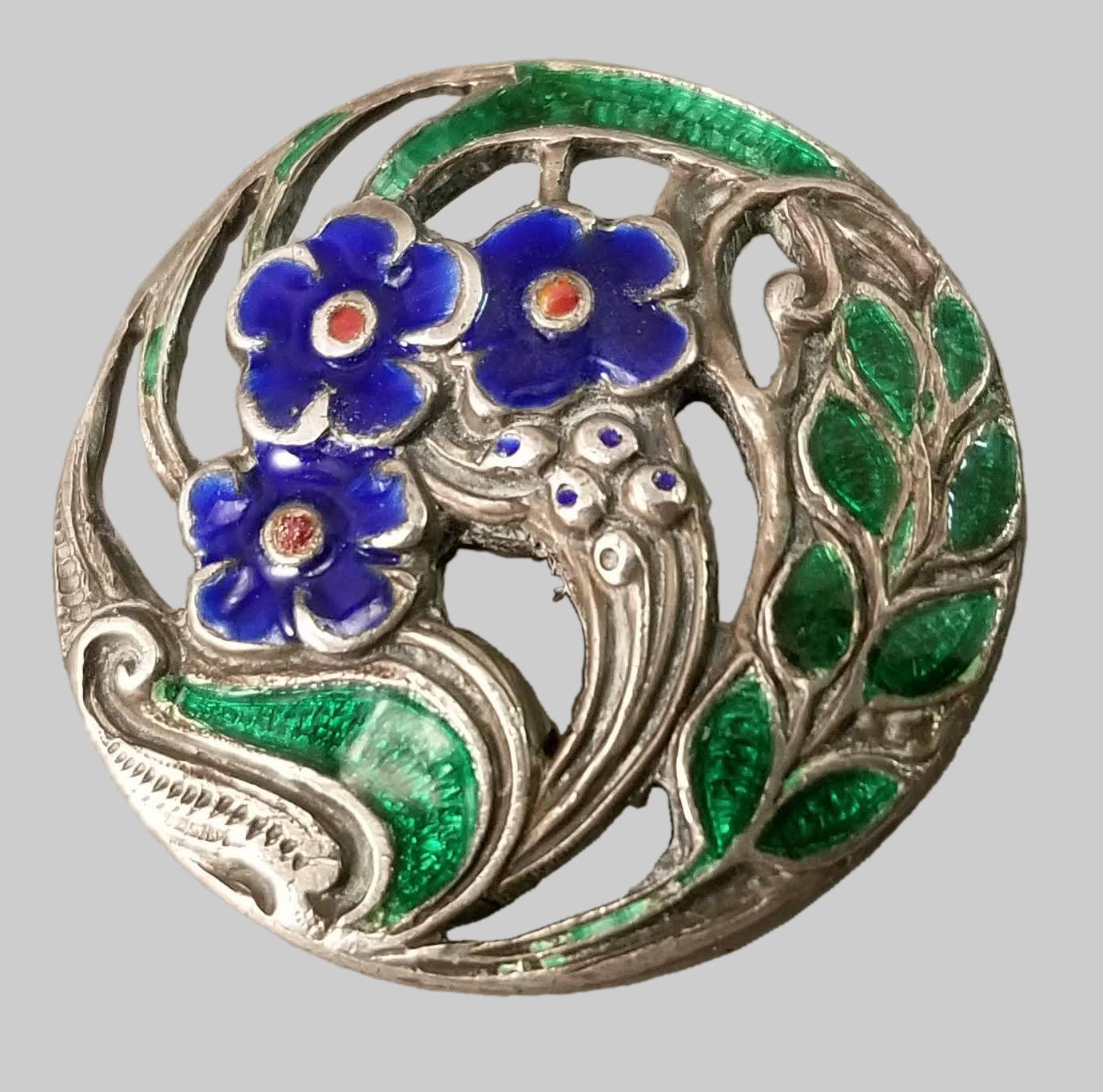
|
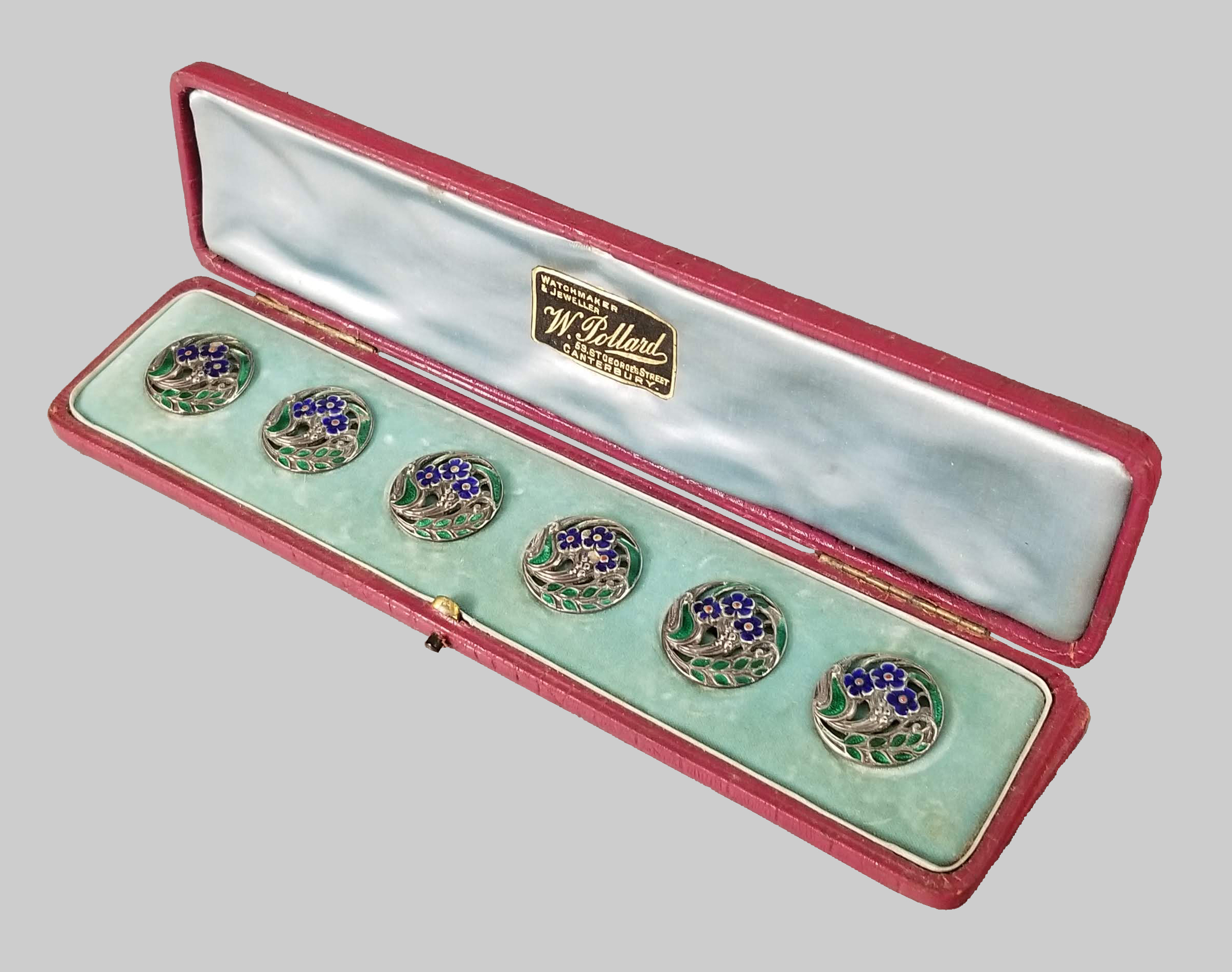
|
|
Fig. 4 - Harry Synyer and Charles Joseph Beddoes, Buttons with Forget-me-nots, 1900, sterling silver and enamel, TRRF Collection. |
|
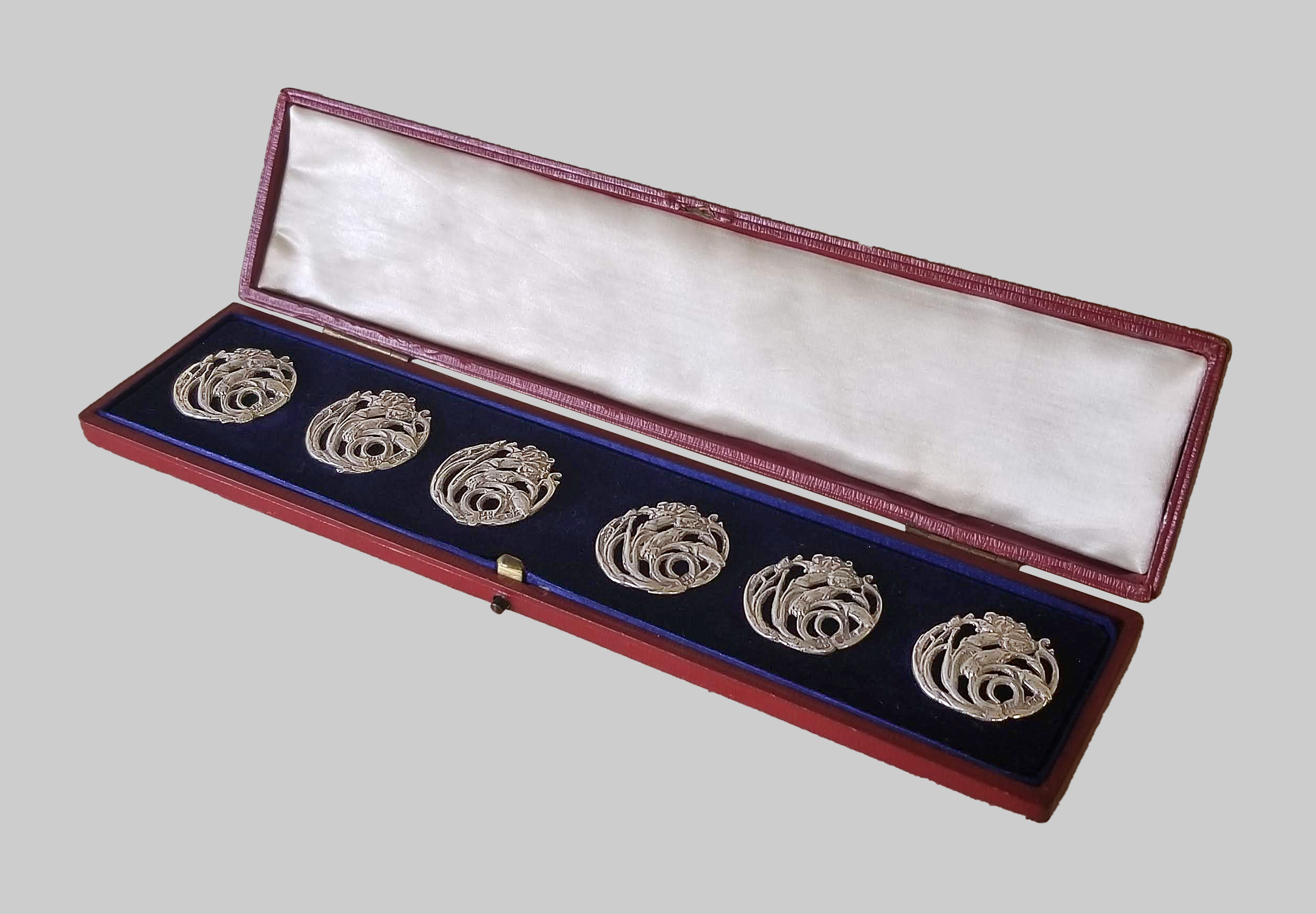
|
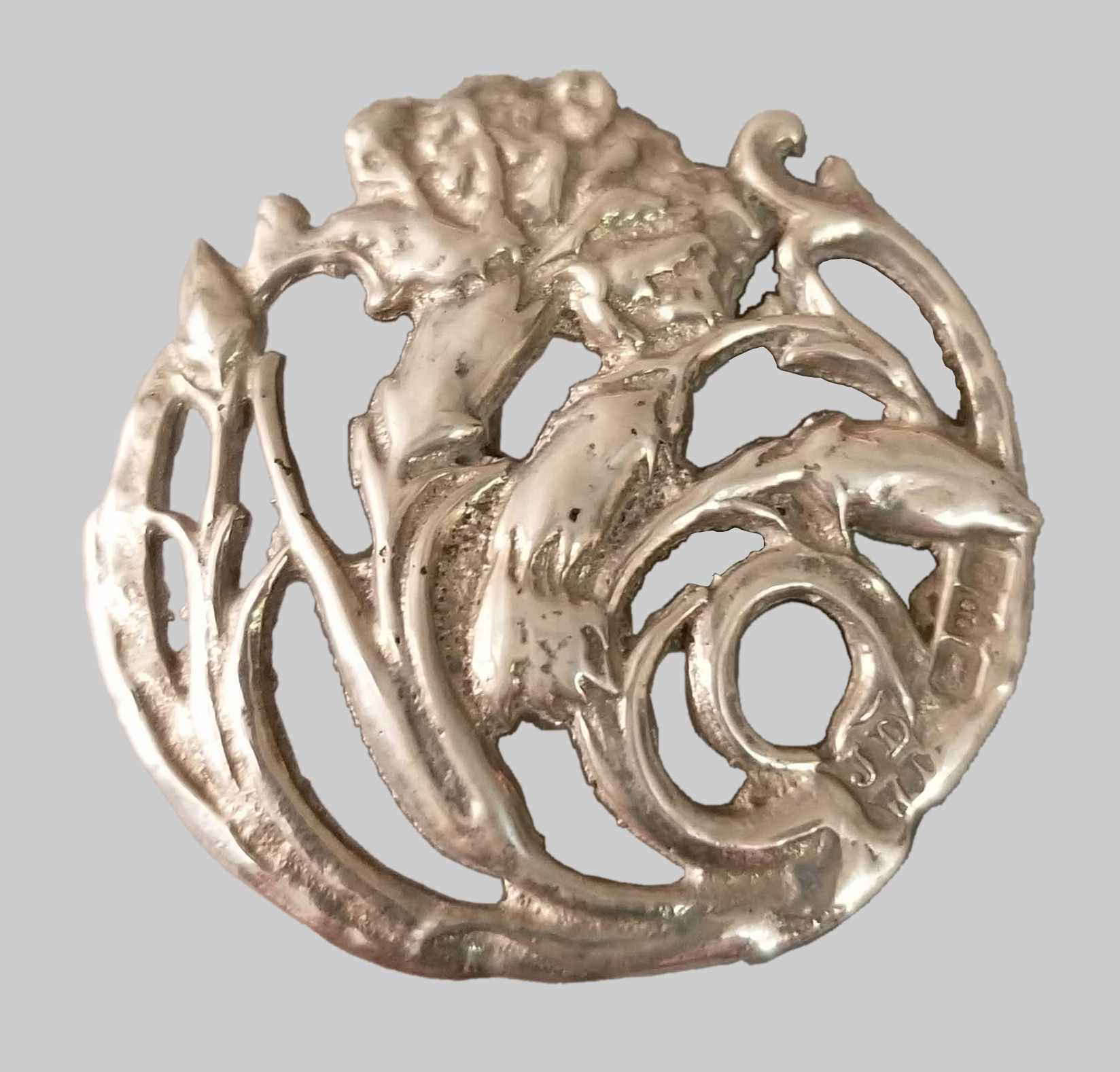
|
|
Fig. 5 - James Deakin & Sons Ltd., Buttons with carnations, 1901, sterling silver, TRRF Collection. |
|
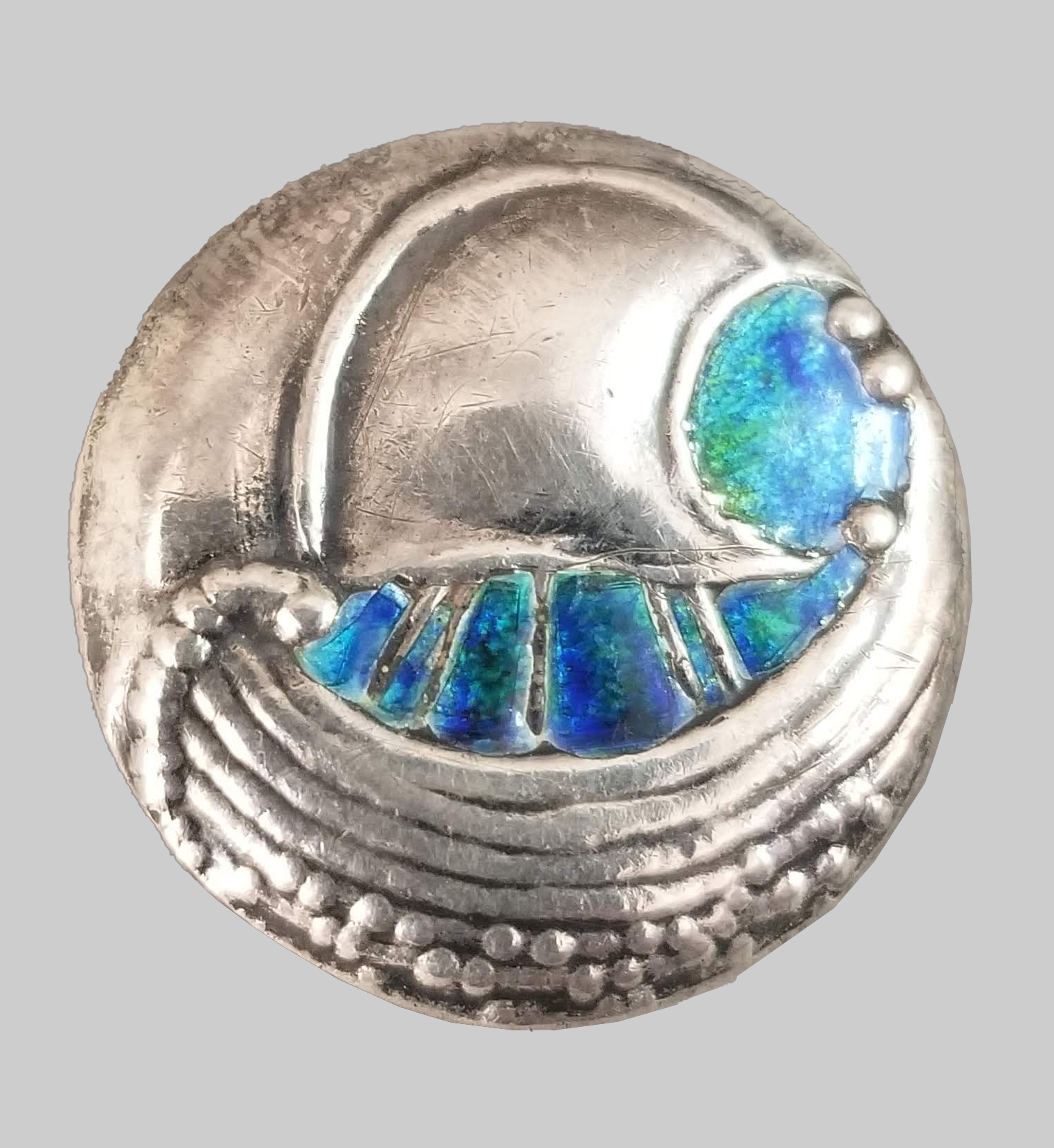
Fig. 6 - Attributed to A.H. Jones, Detail of buttons with galleons, 1907, sterling silver and enamel, TRRF Collection.
Another beautiful set was sold by London’s premier department store Liberty & Co. (Figs. 1, 6). On each button, a Galleon – a sixteenth century Spanish sailing ship – is depicted on a turbulent sea, with a blue and green Limoges enamel background. Achieved by painting finely ground translucent enamel onto a silver surface over the course of many firings, the Limoges technique was frequently featured on Liberty’s Arts and Crafts-style silver.
A set previously owned by British Arts and Crafts jewelry designer Henry Wilson is one of TRRF’s more unique groups (Fig. 7). Each button is decorated with blue champlevé enamel in a flower design accented with diamonds. A leader in the movement, Wilson designed jewelry and taught courses in the subject at London’s Central School of Arts and Crafts and the Royal Academy of Art. In 1903 he published Silverwork and Jewellery, which became an important text for aspiring jewelers and left a major imprint on American Arts and Crafts jewelry.
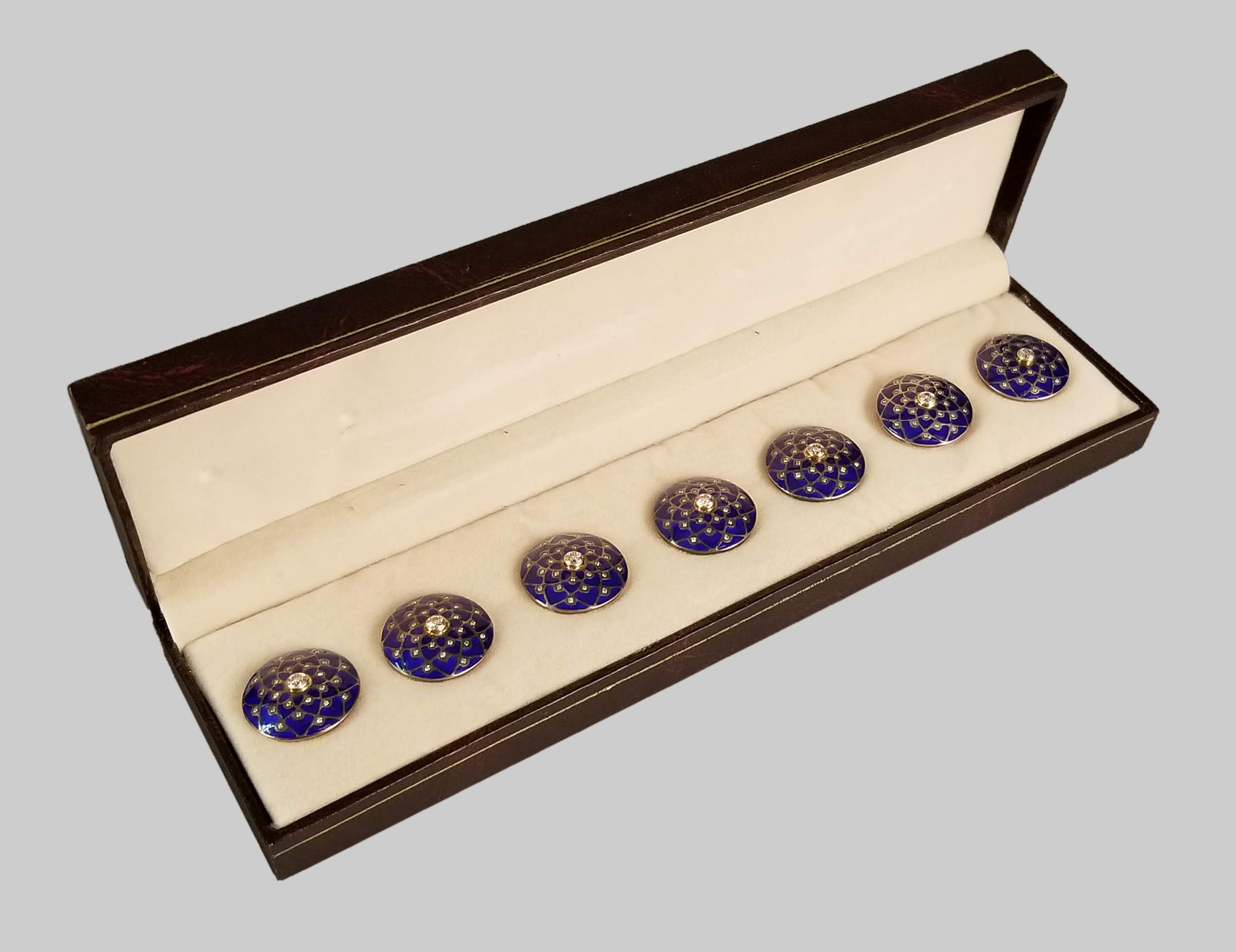
|
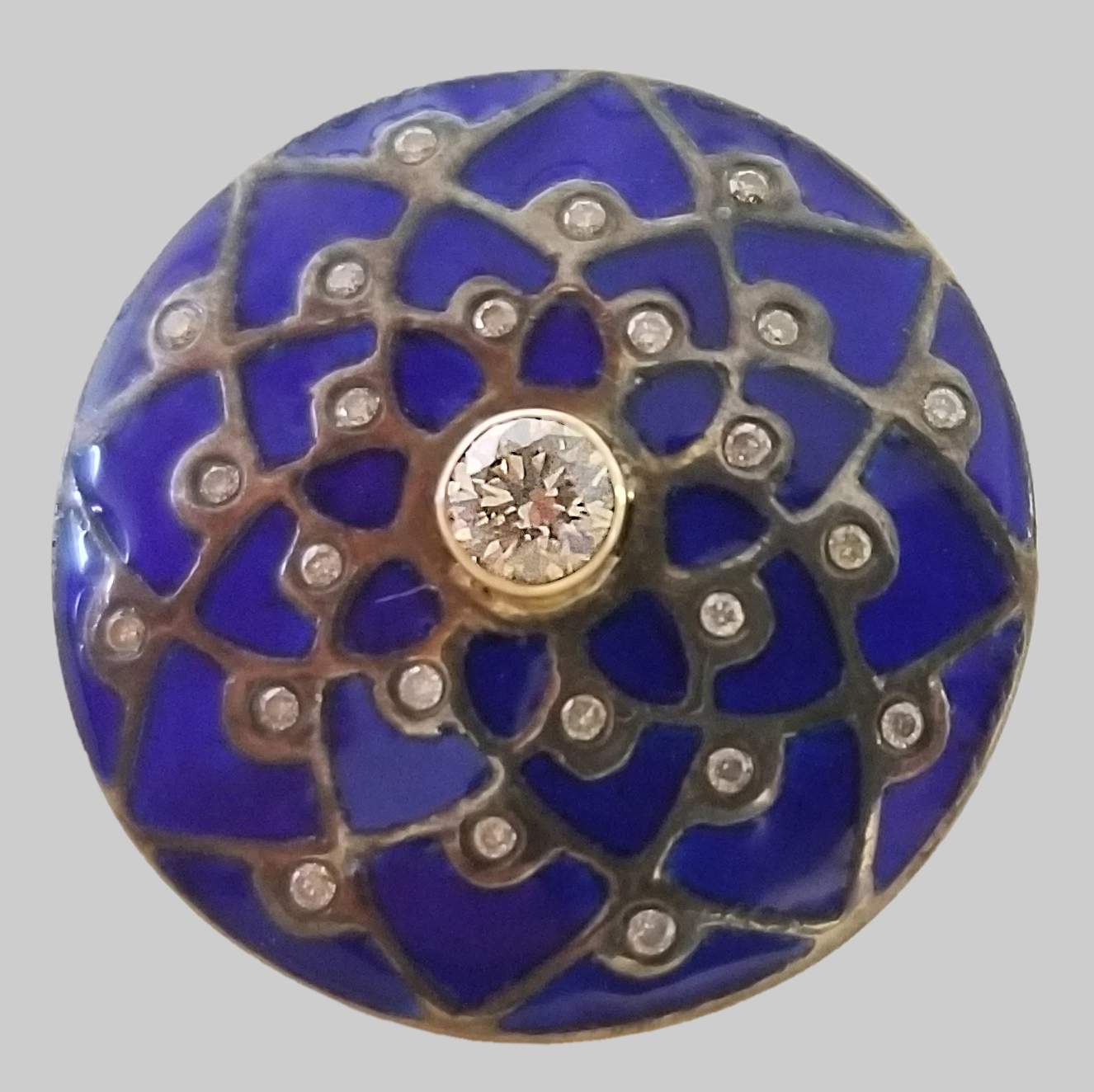
|
|
Fig. 7 - Unknown maker, Buttons with flower heads, 1880-1920, sterling silver, gold, diamonds, enamel, TRRF Collection. |
|
The button’s presence as a fashion necessity began to diminish by the mid-1910s. In 1913, Vogue announced that “buttons are used much less this year than last, and those that do appear serve the purely utilitarian purpose of fastening the gown or coat, or else of supplying a note of color.” By the 1920s, the progressive dress of the Roaring Twenties replaced Arts and Crafts designs. Fashionable flappers with shorter hemlines and straight silhouettes demanded new accessories like jabot pins and long sautoir necklaces. While the vogue for decorative buttons comes and goes, those in the TRRF collection are a reminder of this fastening’s ornamental past.
These buttons and other examples of Arts and Crafts adornment will be included in a forthcoming jewelry and metalwork exhibition to be held at the Museum of the American Arts and Crafts Movement in St. Petersburg, FL.